Which Rooms Get the Oscar?
http://decor-ideas.org 02/22/2015 02:13 Decor Ideas
Wonder what this year’s finest flicks would look like if they were interior spaces? I’ve been pondering the same thing, which is why I decided to select 12 films up for golden statuettes on Oscars Sunday (ABC, 7 p.m. Eastern time, February 22) and trawl through Houzz’s photo gallery to find spaces that embody the movies. Ready for the big reveal? The envelope, please …
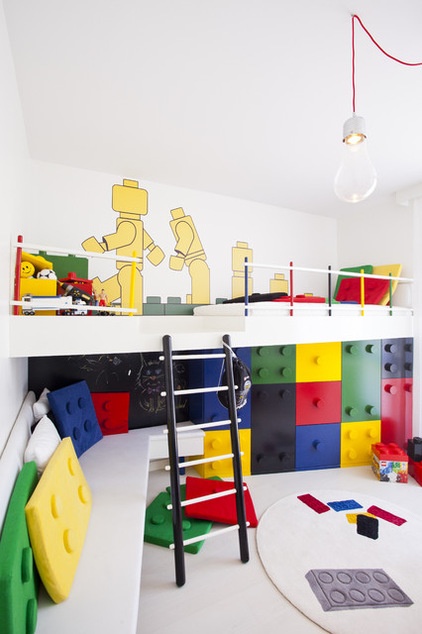
The Lego Movie. One guess for which movie matches up with this cool kids’ room. You got it: The Lego Movie, which is up for an Oscar for its catchy, foot-tapping tune ‘Everything Is Awesome’ in the Best Original Song category. Cool, colorful, comfy and fun (and let’s not forget practical too, thanks to its space-savvy design and abundant storage), this room really is awesome — in fact, I’m 99.9 percent sure that, just like the movie, it would delight big and little kids alike!
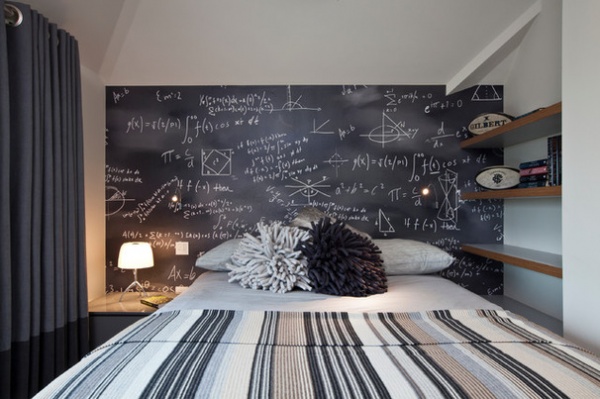
The Theory of Everything. While The Theory of Everything explores the romance and marriage of Stephen Hawking and his first wife, Jane Wilde, as well as his diagnosis of motor neuron disease, the revered scientist’s groundbreaking work in mathematics and physics is, of course, an essential element of the film. So, with this in mind, when I stumbled across this teen boy’s room on Houzz, I instantly knew that I’d found the movie’s design doppelgänger.
Thanks to its preppy striped motif and moody color scheme, the room exudes a scholarly, collegiate vibe, which is fitting, as the biographical film opens with Hawking and Wilde — both students at Cambridge University — meeting at a party, which marks the start of their relationship. But, of course, the most obvious connection between the movie and the bedroom is the chalkboard-feature-wall-meets-headboard, which is covered in mathematical equations, figures and symbols. If that’s not a sign that this bedroom isn’t The Theory of Everything’s interior twin, I don’t know what is!
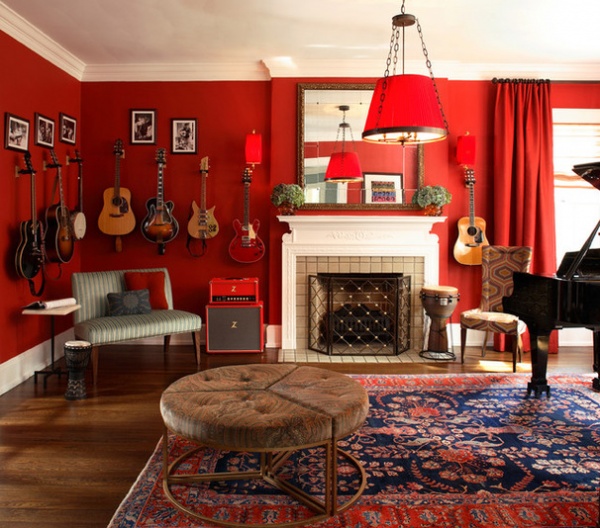
Whiplash. Hands up if you’ve seen Whiplash, an enthralling drama about the relationship between a young aspiring jazz drummer who is determined to do whatever it takes to succeed in the competitive world of music, and an intense, demanding conductor who uses fear and manipulation to push his students in an attempt to make them achieve musical greatness. If you have, then you’d know that a passion for music and the idea of pushing things to the limit are at the heart of the film, two themes that are also prominent in the striking space pictured here.
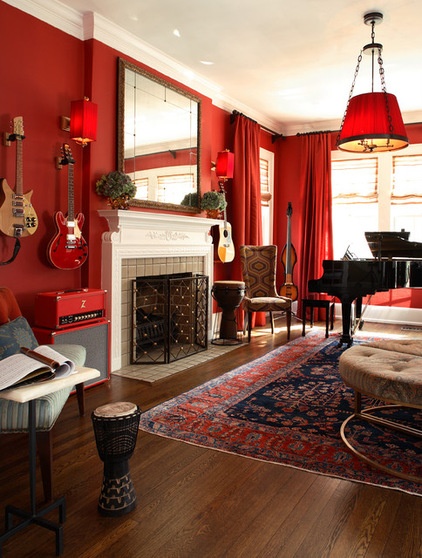
A love of music takes shape in this eclectic music room in two ways: first, in the number of instruments that are peppered around the space (there are at least 12!) and the way each instrument has been thoughtfully and artfully displayed; and second, through the use of rich red, a hue that symbolizes love and fiery passion (as well as violence and power, two other elements explored in depth in the movie). Black and white photos of family members playing their beloved instruments lend a personal touch to the vibrant red space.
Speaking of the bold palette, the daring decision to forgo safe neutrals and instead choose dramatic red as the dominant color — a design move that is key to the high-impact scheme’s success — also echoes the movie’s other central theme and demonstrates that by pushing yourself to your limits (or in the case of this room, by pushing the design envelope), you can achieve greatness.
While the room exudes classical concert-hall elegance rather than a cool jazz-bar vibe, we still think its design elements make it an ideal interior match for the jazz-oriented Whiplash; what are your thoughts?
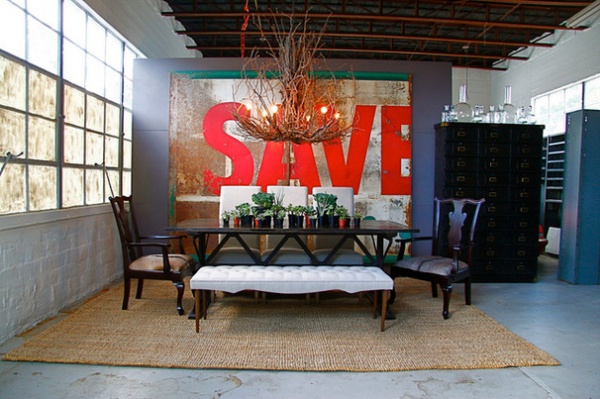
Birdman. If Birdman were a room, it would definitely be a space like this cool, urban industrial-style dining zone. Just like the look of the film, the area is raw and gritty, plus it feels compact and intimate — note how the moody palette and large area rug make the open-plan space feel less expansive — which echoes the design of the sets and framing of the shots used throughout the movie to reflect the main character’s, has-been actor Riggan Thomson’s, growing anxiety and paranoia.
The theme of reinvention is another common feature of both the film (which focuses on Thomson’s quest to rebuild his career) and this eclectic dining space. Here vintage and modern furniture have been paired to give the room a fresh, new look. Note the oversize “Save” artwork, too, which also ties in with the character’s desire to reinvent both his personal and professional life.
And let’s not forget the nest-like chandelier, which is just another reason I think Birdman and this edgy dining zone are an ideal movie-meets-interior matchup.
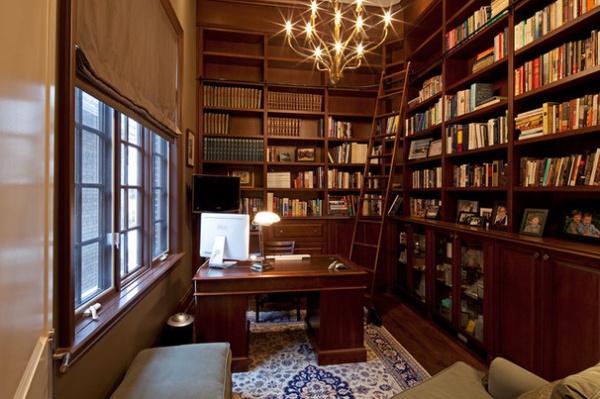
The Imitation Game. Can you imagine Alan Turing, Benedict Cumberbatch’s code-breaking character in the historical thriller The Imitation Game, sitting behind this desk or in the plush armchair while working on scholarly papers, completing a crossword or reading a book on cryptography? I can, which is why I’ve chosen it as the Best Picture nominee’s ideal interior match. Of course, if the scheme had been true to the time the movie was set in (the 1940s and ’50s), then the space would be sans the two computers propped up on the desk and opposite shelf. However, since Turing is considered a pioneer of computer science, I think they’re fitting additions to the space.
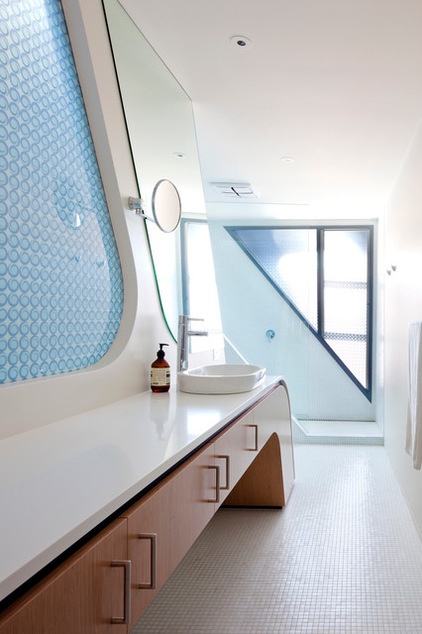
Interstellar. While Interstellar doesn’t explicitly name climate change as the cause of the ecological crisis that has seen Earth’s weather patterns drastically change, resulting in the destruction of once-fertile farming land and a chronic food shortage across the globe, it certainly hints at it. Team this ecoconscious message with the film’s other futuristic themes (such as space travel and the bending of space and time), adapt the ideas into a scheme for the home, and this is the result: a sustainable space with a sleek, futuristic look. With its angular lines, organic curves and space-age-esque aesthetic, this ultramodern, ecofriendly bathing zone captures the look and essence of Interstellar perfectly, I think. Do you agree?
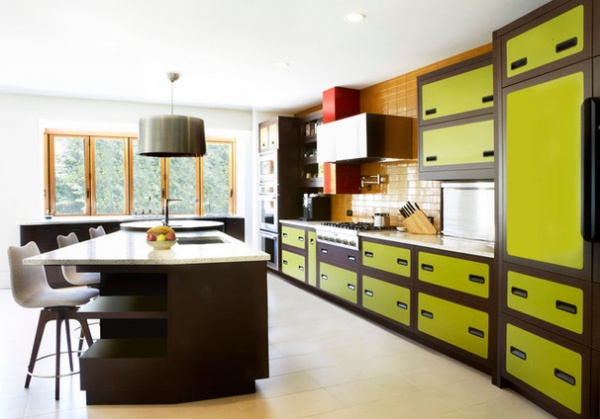
X-Men: Days of Future Past. Did you know that X-Men: Days of Future Past is nominated for an Oscar this year? Neither did I, until I read the full list of nominees and discovered that the superhero blockbuster is up for a golden statuette for Visual Effects.
So, armed with this information, I started hunting for the film’s design double and found this funky, personality-packed kitchen, which is a near-perfect match for the movie. Not only does the retro-style cooking zone tie in with the storyline and look of the film (in which Logan — aka Wolverine, played by Hugh Jackman — travels back in time to the 1970s so he can change the past and, in doing so, save the future), but it also echoes the title of the movie. The scheme marries modern design elements (like the stainless steel appliances and metallic drum pendant) with popular trends from the past (such as the ’70s-inspired palette of avocado and brown, and strong use of geometric shapes and lines).
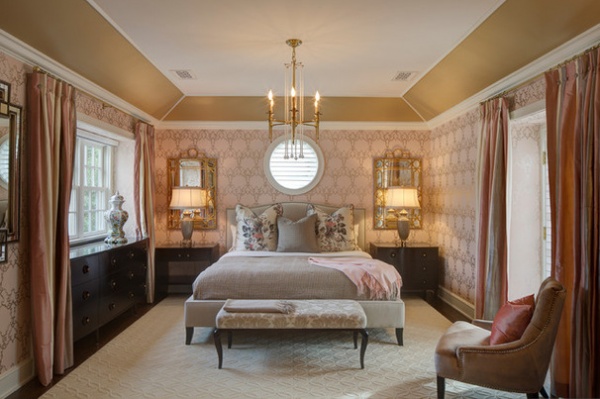
The Grand Budapest Hotel. It’s hard to pick what I loved most about The Grand Budapest Hotel, a charmingly quirky comedy that’s been nominated for nine Oscars this year. But if pressed to choose just one element, it would have to be the enchanting world that writer and director Wes Anderson has created, in particular the exquisite interior sets, which left a lasting impression on me long after I left the cinema.
While an endless number of bedrooms on Houzz are Grand Budapest Hotel–esque, this whimsical scheme captured the look and feel of the film best for me. The movie’s visually stunning style is mirrored in this room through the use of dreamy pastels, glam metallic touches, luxe textiles, floral motifs and elegant accents.
More inspiration from The Grand Budapest Hotel
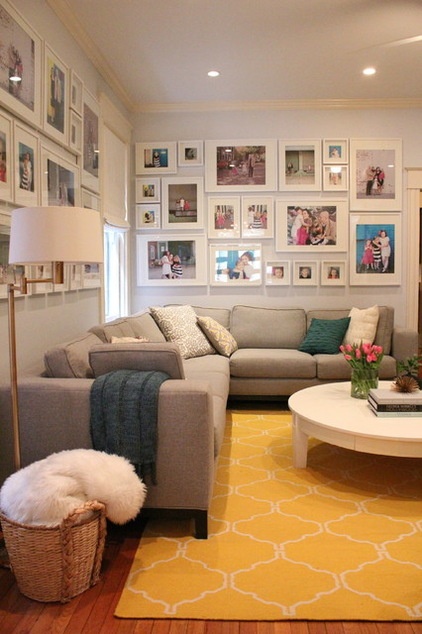
Still Alice. Still Alice is the inspiring yet heart-wrenching story of a 50-year-old English professor and mother, played by Best Actress favorite Julianne Moore, who is diagnosed with early-onset Alzheimer’s disease. The drama explores how the condition affects her sense of self and changes the dynamics of her family.
This film reminds me of the importance of love and family, which is why I’ve paired it with this cozy living room, which is homey, looks well loved and is filled with memories — memories that family members have made in the space, as well as the precious moments that have been captured in family photos that cover both walls.
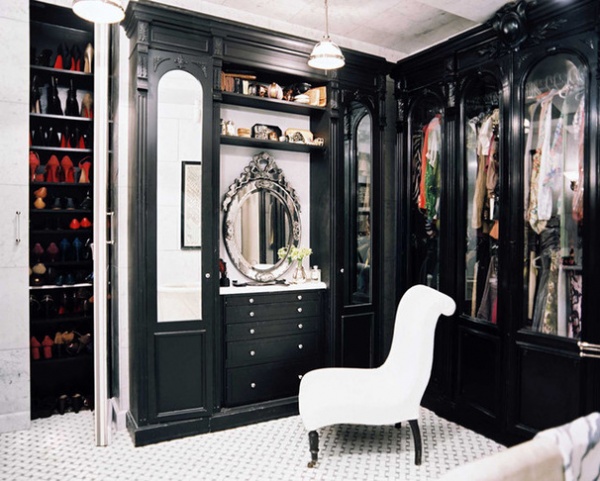
Maleficent. Since Maleficent, a retelling of Walt Disney’s beloved animated fairy tale Sleeping Beauty, is nominated for an Oscar for Costume Design, it seemed only right that the film’s interior twin be a decadent walk-in closet fit for royalty, even an evil queen (or a reformed one, in the case of this dark fantasy film). After sifting through pages upon pages of elegant closets in airy white and neutral tones, I finally chanced upon this modern glam wardrobe and knew I’d found “the one.”
The chic monochromatic palette and opulent accents combine to create a space that’s mysterious, alluring and grand, and strikes the right balance between lightness and darkness (or good and evil) — just like the film’s title character.
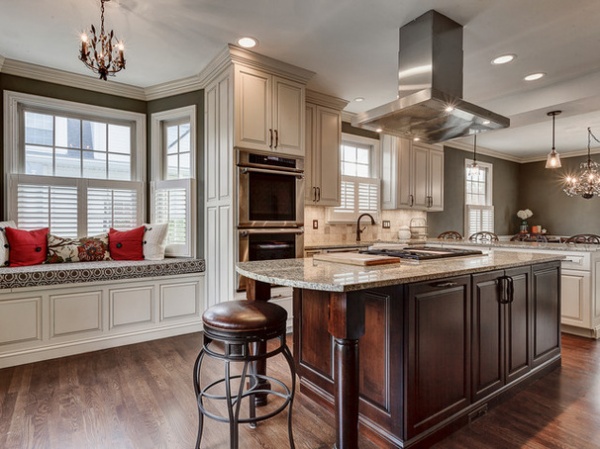
Gone Girl. I don’t know about you, but I had to do a double take when I first spied this modern traditional kitchen, as it looks remarkably similar to the cooking zone of Nick and Amy Dunne, the two main characters in the psychological thriller Gone Girl.
While I think the space is a pretty good match for the movie, there are obviously a few differences between the two neutral-toned kitchens, such as the layout and configuration of the spaces, and the lighting used in both rooms. The most notable difference, however, is the vibe of each of the schemes. While the fictional kitchen looks and feels a little too picture perfect (just like the couple’s relationship) and cold, due to its all-neutral palette and lack of personal touches, this cooking zone feels warm, inviting and cozy, thanks to the abundance of natural light. The patterns, textures and pops of red along the window seat also add personality and a welcoming ambience. I bet you can guess which of these kitchens I’d prefer.
More:
Golden Globes: 6 Design Ideas From ‘The Grand Budapest Hotel’
10 Leading-Role Movie Houses
Related Articles Recommended












